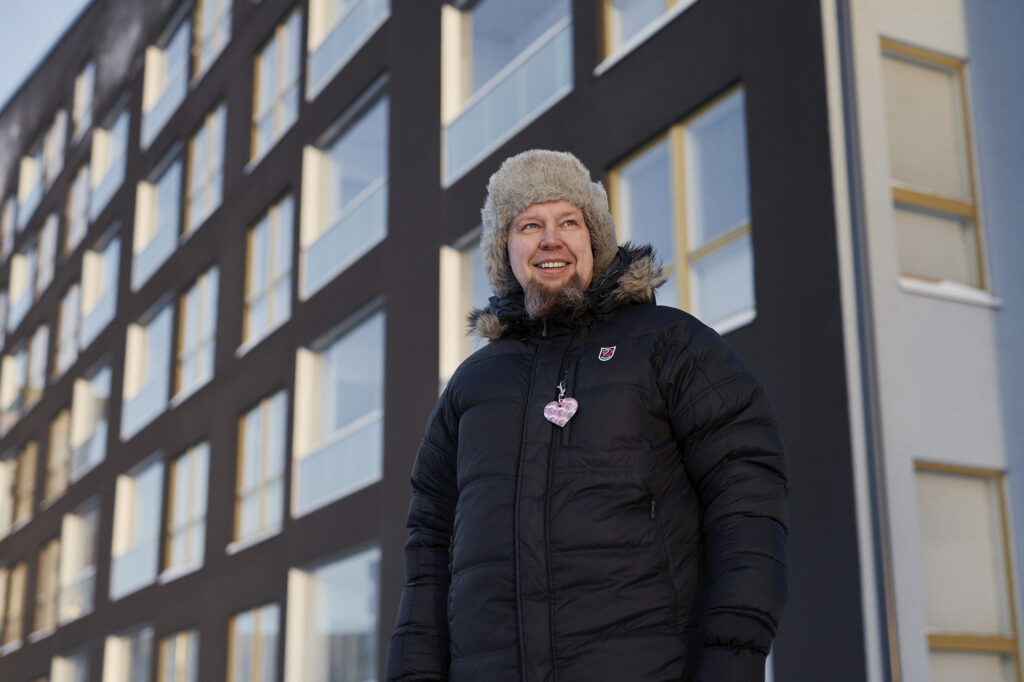
At the heart of Kojamo’s roadmap to carbon-neutral energy use is day-to-day work or, in other words, normal energy efficiency measures. Building technology solutions play an important role in this respect, and they can be used to monitor and optimise a property’s water efficiency or ventilation, for example. In 2023, the Lumo Heat optimisation concept was introduced at 60 properties. It improves each property’s energy efficiency and, above all, the resident experience by keeping indoor temperatures stable.
A comprehensive range of measures to improve energy efficiency
When older properties are renovated, measures are always taken to improve their energy efficiency.
“In the long run, these measures will gradually improve the energy efficiency of the entire property portfolio and move us towards our goal of carbon-neutral energy consumption at our properties by 2030,” says Pasi Kujansuu, Unit Director, Property Services.
Changing a property’s source of heating energy is another way of reducing the carbon footprint. In 2023, Kojamo started seven geothermal projects, which will reduce the emissions of Kojamo’s property portfolio by a total of about 5%. The estimate has been prepared in the planning phase of the investment and will be updated when the projects are completed.
“Traditional geothermal heating was installed at three of these properties, while four properties use a hybrid system that combines geothermal heating and heat recovery technology. The advantage of the hybrid solution is that heat recovery improves the energy balance of the properties and covers approximately half of the geothermal well field. For example, instead of 10 geothermal wells, you only need five. The projects will be completed in early 2024,” Pasi explains.
New properties have a considerable impact on the carbon footprint of the property portfolio because new apartments are built to be energy efficient as a rule. Completed new properties improve the efficiency of the entire property portfolio in terms of apartment-specific emissions. A total of 1,450 new apartments were completed for Kojamo during the year.
Optimising energy use with demand response agreements
Vantaa Energy is one of Kojamo’s energy companies in the capital region. In late 2023, the companies announced a demand response agreement. In connection with the agreement, Kojamo will adopt renewable district heating in over half of its properties in Vantaa.
Demand response is about optimising heat production and heat consumption. Previously, energy and heat consumption has been optimised on a property-specific basis. Now, the entire district heating network is optimised. This leads to much greater impacts.
“In practice, the indoor temperatures in our properties are monitored using smart technology. For example, when a spike in the need for heating is approaching, the property can be charged with a little excess heat in advance. Thus, when the spike in demand occurs, less heating is needed, and the stored heat is sufficient to maintain the desired temperature in the apartments,” Pasi elaborates.
“In the property sector, heating has a significant impact on the carbon footprint. The district heating provided by Vantaa Energy already has a small carbon footprint, but we have now also switched to zero-emission heating. This has reduced the total emissions of Kojamo’s entire property portfolio by as much as 17%,” Pasi says delightedly.